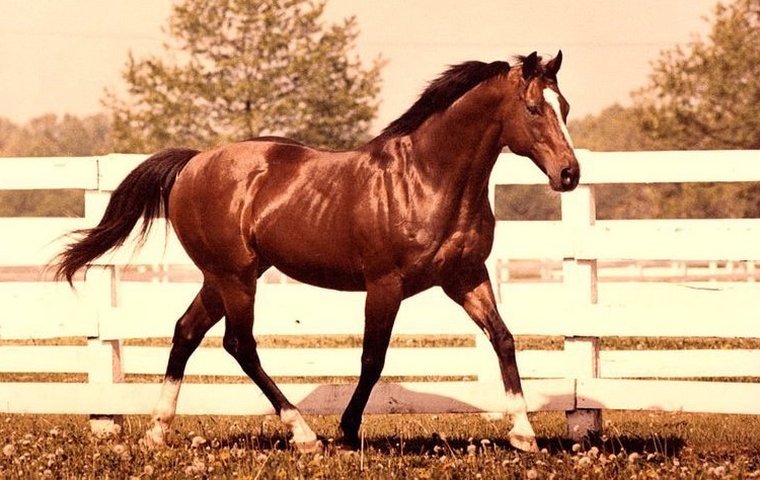
In an extract from her book The Kingmaker – How Northern Dancer Founded a Racing Dynasty (updated), respected pedigree authority Avalyn Hunter chronicles his transition from racetrack to stud duties in his native Canada
A little over a week before Northern Dancer’s retirement became official, the champion’s adoring fans were given an opportunity to say goodbye.
Arrangements were made for an exhibition gallop at Woodbine on October 24, 1964, as part of Canadian Championship Day. At Edward Taylor’s request, Ron Turcotte was aboard for the ride, which was staged just before the feature race.
“It was a real pleasure for me,” Turcotte recalled. “He was much more mature than when I first rode him, so much easier to handle. He was kind of disappointed that I only just galloped. And then I went out in the next race and won the Canadian Championship Stakes with Will I Rule. It was a great day.”
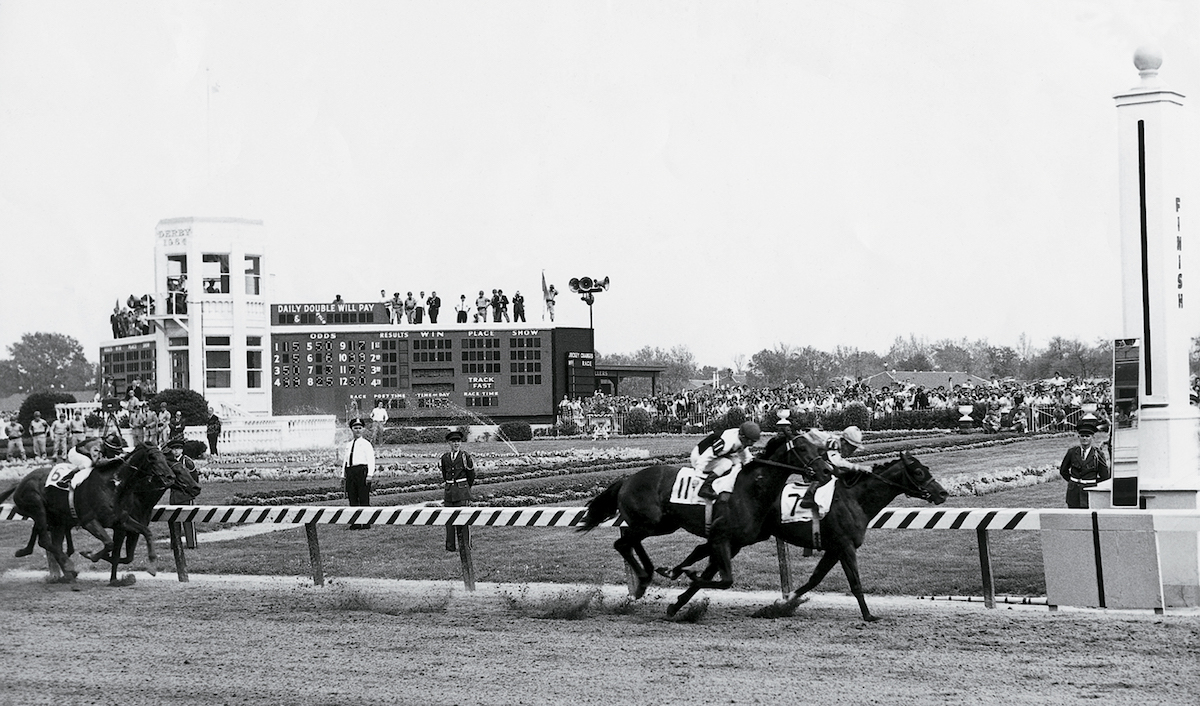 Disappointed or not, Northern Dancer was not going to get the chance to damage his strained left foreleg further; he was far too valuable as a stallion prospect. His value was further emphasized by the awards that came flooding his way.
Disappointed or not, Northern Dancer was not going to get the chance to damage his strained left foreleg further; he was far too valuable as a stallion prospect. His value was further emphasized by the awards that came flooding his way.
On November 14, the Toronto edition of the Daily Racing Form announced Canada’s year-end champions. No one was surprised that Northern Dancer was unanimously voted both champion three-year-old male and Horse of the Year except those who realized that the voting rules had been rewritten on the Dancer’s behalf.
Prior to 1964 Daily Racing Form’s rules governing its awarding of Canadian championships required that a prospective champion be bred in Canada and do its best racing there.
Clear superiority
Northern Dancer met the Canadian-bred requirement and had certainly been devastating in the Queen’s Plate, but his lone 1964 start in Canada hardly constituted his ‘best racing’; hence, that requirement was quietly dropped. One doubts if anyone protested the change, given Northern Dancer’s clear superiority over anything else running in Canada.
Given 132 pounds in the Canadian Experimental Handicap, he was rated five pounds better than champion grass horse Will I Rule, six pounds better than champion older male E. Day, and 12 pounds better than three-year-old runner-up Langcrest.
(Ironically, Northern Dancer would not have been eligible for the modern-day Sovereign Awards either. Although the Sovereign Awards do not require a horse to be bred in Canada to be eligible, they do require at least three starts in Canada for an animal to be considered in the championship voting.)
December 3 rolled around, and with it another award: Edward and Winifred Taylor jointly accepted the award for Northern Dancer as the American champion three-year-old male at the Thoroughbred Racing Associations’ annual awards banquet.
One of three organizations then choosing divisional champions in the United States, the Thoroughbred Racing Associations was not alone in assessing Northern Dancer as the best of his generation anywhere in North America.
King of his generation
Daily Racing Form also named Northern Dancer champion and assigned him 128 pounds on its Free Handicap for three-year-olds, a pound more than Quadrangle and Roman Brother, who shared the second spot; in the overall standings, Northern Dancer ranked behind only three older males — Kelso (136 pounds), the formidable Gun Bow (136 pounds), and the top-class grass specialist Mongo (133 pounds).
The Blood-Horse likewise rated Northern Dancer as the best three-year-old in North America, so all of the major American organizations were united in proclaiming what Canadians had known since May: Northern Dancer was the king of his generation.
The colt even conquered the best competition Homo sapiens could throw at him, for at the end of December he received a totally unprecedented honor for a racehorse. Besting several Olympic medalists, a slew of hockey players, and his old friend Ron Turcotte, Northern Dancer was named Canada’s Athlete of the Year by a vote of Canada’s sports editors and journalists. While the decision outraged a few hockey supporters, it was popular with most Canadians.
Northern Dancer’s fellow countrymen and countrywomen drove to the National Stud Farm to see him in such numbers that visiting hours eventually had to be curtailed to keep the chaos in check.
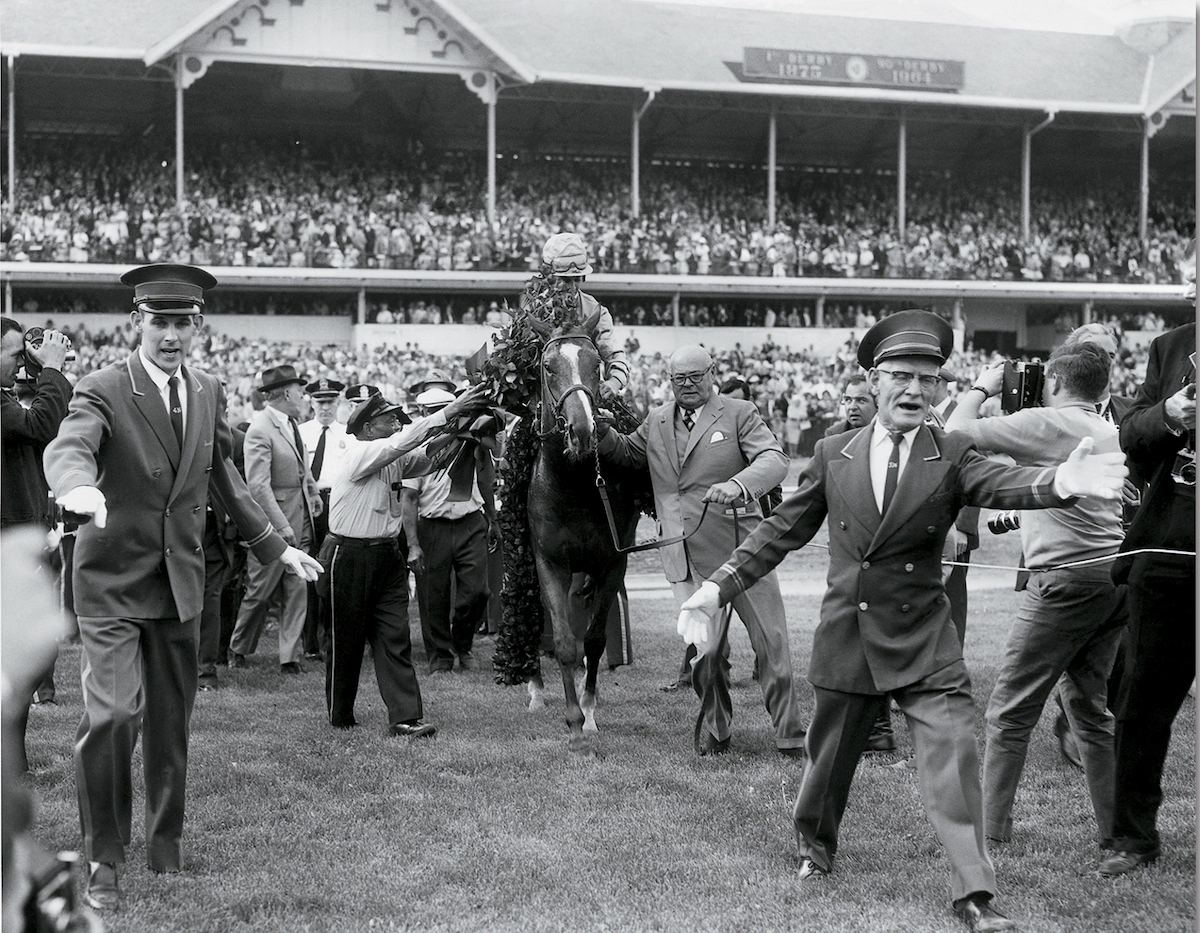 That Northern Dancer was still in Canada at all was a tribute to E.P. Taylor’s dedication to Canadian racing and breeding. Once the colt’s retirement had been announced, Taylor received numerous offers either to syndicate the colt or to stand Northern Dancer on his behalf; under either arrangement Northern Dancer would have been moved to Kentucky.
That Northern Dancer was still in Canada at all was a tribute to E.P. Taylor’s dedication to Canadian racing and breeding. Once the colt’s retirement had been announced, Taylor received numerous offers either to syndicate the colt or to stand Northern Dancer on his behalf; under either arrangement Northern Dancer would have been moved to Kentucky.
But Taylor refused all offers. Northern Dancer was a Canadian hero, he said, and he would remain in Canada.
Strong support
In truth, even before the last offer came in, Northern Dancer’s initial book of 35 mares was already full. Taylor was providing the young stallion with ten of his best mares; the other 25 were coming from breeders in Canada, Kentucky, Maryland, and Pennsylvania. This was strong support for Northern Dancer, particularly in view of his $10,000 stud fee – the same that his sire Nearctic then commanded.
The very first mare Northern Dancer was assigned to cover was his owner’s Flaming Page. A daughter of Bull Page, she had been sold at the 1960 Windfields yearling sale but had been turned back by purchaser Frank Sherman because of an ankle problem discovered shortly after the sale.
One can only imagine Sherman’s feelings two years later on seeing Flaming Page run second in the Kentucky Oaks behind the American champion Cicada, then return home to romp in the Canadian Oaks against her own sex and in the Queen’s Plate against males.
On paper Flaming Page looked like a perfect mate for Northern Dancer. A high-class racer, she was a big, strong, rather masculine-looking mare who offered plenty of size to offset Northern Dancer’s lack of inches, which was exactly the problem when the two were brought together in the breeding shed.
Try as he might, Northern Dancer simply wasn’t tall enough to mount Flaming Page successfully. The mare finally ended the unintended comedy by getting fed up and letting fly with both heels, catching Northern Dancer squarely in the ribs.
That ended the attempted breeding; fortunately, Northern Dancer was not seriously injured in either body or libido. (Some stallions, on getting kicked by an early mate, become so mentally traumatized that they either refuse to breed at all or become reluctant breeders – or they may develop quirks such as refusing to breed a mare of the color of the one that kicked them.)
Still, there was the problem of getting Flaming Page bred before she passed out of heat, necessitating a three-week wait before she would come into season again.
The solution was simple; a shallow pit was dug in the dirt floor of the breeding arena. Concrete and asphalt were poured in to provide a stable surface, and the depression was then lined with non-slip matting on top of the asphalt.
Return tryst
When the time came for the return tryst, Flaming Page was led to stand in the depression; Northern Dancer, standing on the higher ground of the main floor, was able to make a successful cover.
(A different strategy was used following the Dancer’s move to Windfields Maryland, as the breeding shed there had a solid floor that could not be dug into. Instead, a low ramp was used to give Northern Dancer the extra inches he needed to cover his mates – an arrangement never entirely popular with the Windfields staff, who feared that the stallion might slip or fall off the ramp when dismounting his mares. But as Joe Hickey Jr. said, “He scared us a few times, but nothing ever really happened.”)
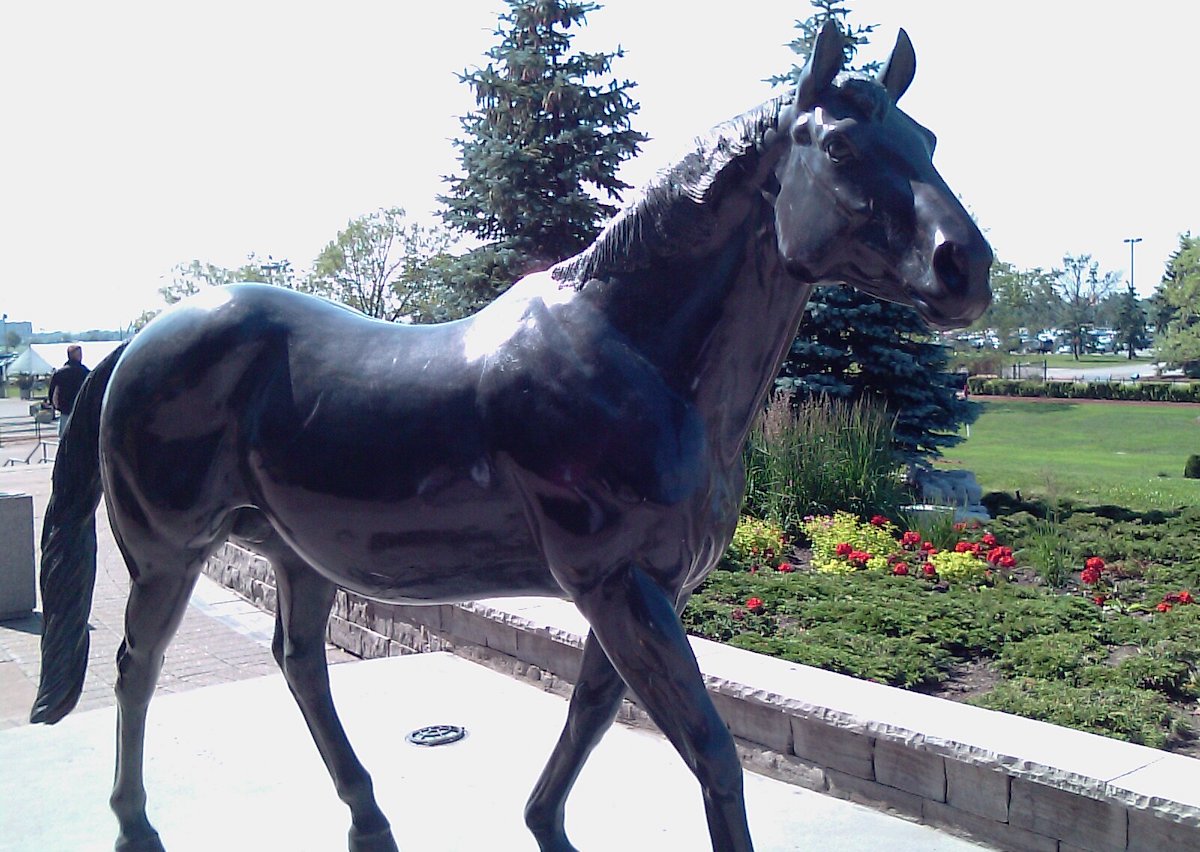 Northern Dancer had always shown a strong interest in fillies and mares; now that he had actually mated with one, his sex drive intensified.
Northern Dancer had always shown a strong interest in fillies and mares; now that he had actually mated with one, his sex drive intensified.
He had every intention of breeding every mare on the farm and every mare brought to it, and he would become enraged if he realized another stallion was being taken to the breeding shed in his stead.
“It was really rather funny,” recalled Hickey, who became quite familiar with Northern Dancer’s behavior while general manager at Windfields Maryland.
“I don’t know how he did it, but he could tell whether a van coming onto the farm had mares aboard or not.
“If it was carrying hay or other stuff, he’d not pay it any attention, but if there was a mare on board – well, he had this half-door with a screen on the front of his stall, and he’d have his front hooves up on the wooden edge of that lower half like a big dog and be whinnying and hollering for all he was worth. Even if the mare never called or made a sound, he’d do that. I don’t know how he knew, but he knew.”
With eight other stallions to share stud duties at the National Stud Farm, Northern Dancer certainly wasn’t going to get to breed every mare there – but there was no telling him that.
The Windfields staff rapidly learned that he could not be left in a paddock while another stallion was breeding; he would gallop himself into a lather. Leaving him loose in his stall was nearly as bad, for he would stomp, kick, and maul his water buckets and feed tubs while screaming his displeasure.
The one remaining solution was to tie him up with a chain (he could snap any rope made) in his stall, and even that had its pitfalls; left with too much length one occasion, he tried to climb the partition separating him from freedom and nearly hanged himself instead.
Highly dominant behavior
Northern Dancer’s behavior was that of a highly dominant stallion, and it continued as such even when mares were not around. Left in a paddock, most horses will quickly settle to grazing or even lie down, but not Northern Dancer.
In a manner reminiscent of wild herd stallions guarding their territories, he would patrol his paddock periodically, head up and alert for potential dangers. Perhaps because of his constant activity, he continued to present a hard-muscled appearance well past an age at which most stallions have long since become comfortably fleshed out.
The mere humans he dealt with quickly learned that one did not go into Northern Dancer’s paddock, even to take him to his supper; one waited until it pleased the horse to come over to the gate and signal his readiness to leave his territory.
Dancing, prancing, and hollering, Northern Dancer serviced the 35 mares he had been assigned over the course of the breeding season and gave every indication that he would have tried to cover thrice that many given the chance.
Twenty-six pregnancies resulted from his first season’s efforts. Flaming Page, alas, gave birth to stillborn twins; four other mares failed to produce live foals for various reasons.
But 21 sons and daughters of Northern Dancer made it through birth to frisk in pastures from Canada to Kentucky during the spring of 1966. They were the beginning of Northern Dancer’s legacy.
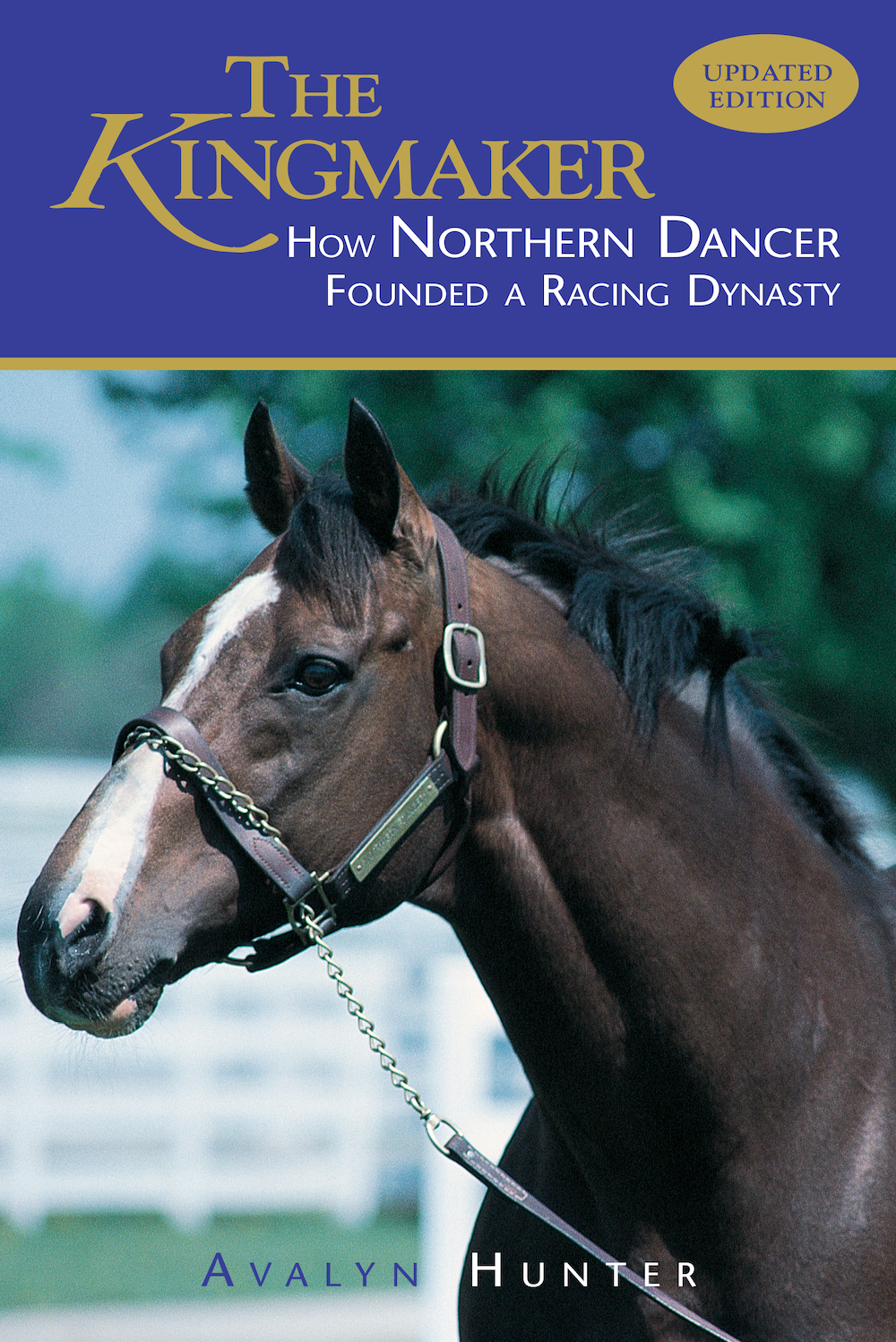 The Kingmaker: How Northern Dancer Founded a Racing Dynasty by Avalyn Hunter is published by Eclipse Press in April 2024. Updated paperback edition (254pp) can be purchased here for $26.95
The Kingmaker: How Northern Dancer Founded a Racing Dynasty by Avalyn Hunter is published by Eclipse Press in April 2024. Updated paperback edition (254pp) can be purchased here for $26.95
• Visit Avalyn Hunter’s American Classic Pedigrees website
Kentucky Derby 150th anniversary series: ‘A little white-faced Canadian-bred used America’s greatest race as springboard to becoming the world’s greatest stallion’
Who’s the daddy? Top ten greatest sires of the last 100 years
View the latest TRC Global Rankings for horses / jockeys / trainers / sires


